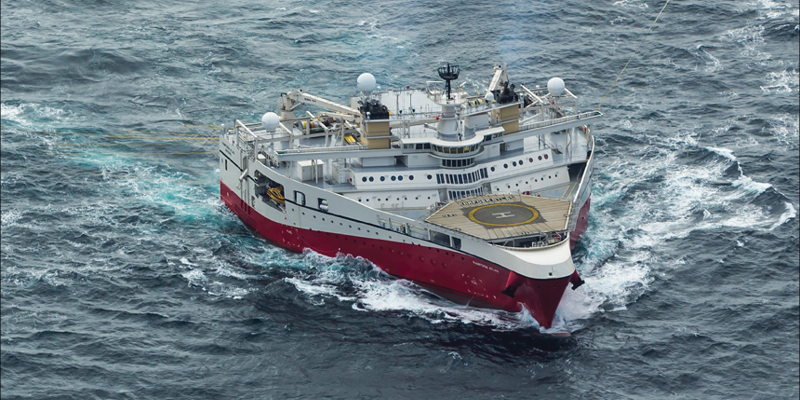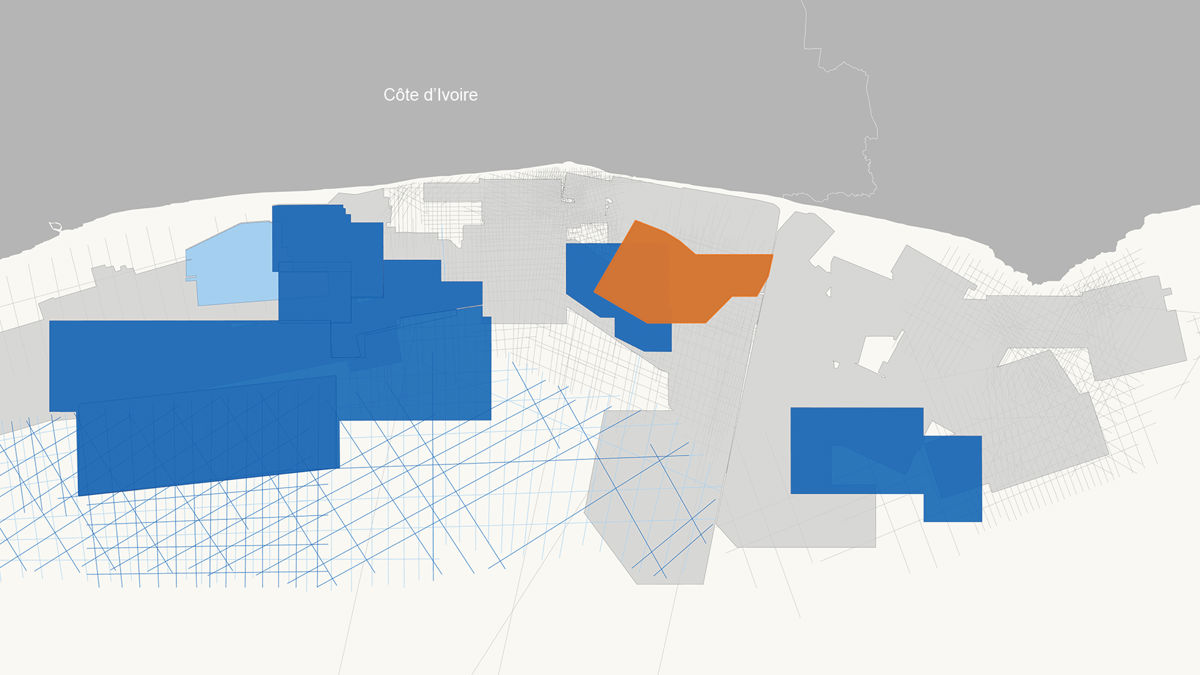PGS Prepares New GeoStreamer Data for Cote d'Ivoire

PGS is currently processing over 2 000 sq. km of new broadband 3D seismic data for offshore Côte d’Ivoire Data, for delivery in August 2023. The data benefits from the latest KPSTM processing to image prolific Cretaceous reservoir targets.

New GeoStreamer MultiClient data around the shelf edge aims to increase understanding for future exploration. The final data will be ready in August 2023.
Tano Basin Discoveries
The basin has seen several high-profile discoveries made in and around the shelf edge in recent years. The drilling of the Afina-1 well (Springfield, 2019) in Ghana and the discovery and subsequent expansion of the Baleine structure (Eni, 2021/2022) have shown that there are significant volumes of hydrocarbons being found in the Cretaceous over continental crust across this well-explored basin.
Proven Source Rocks
Two main plays have been the focus for exploration in the Tano Basin: the syn-transform Lower Cretaceous and the post-transform Upper Cretaceous. The Lower Cretaceous play dominates the area around the shelf edge in both the Ghanian and Ivorian offshore. A contributing factor in this inboard dominance is the source-rock maturation history. Berriasian to Albian source rocks sit within the gas maturity window around the shelf due to a relatively thinner overburden, whereas they are likely to be over-mature in more distal syn-transform basins where the depth of burial is greater. These source rocks are paired with Albian-aged fluvial to shallow marine syn-transform sandstones, as proven in the Baobab Field (CNR, 2001).
Upper Cretaceous Oil & Gas Potential
The Upper Cretaceous system is most successful around and outboard of the present-day shelf edge due to the thick clastic section allowing for sufficient burial of shallower Cenomanian-Turonian aged source rocks. These type II source rocks have been proven to have mixed oil and gas potential. Albian to Santonian aged shallow to deep marine sandstone reservoirs complement this widespread source kitchen. The Baleine shelf-edge structure holds the largest discovery in the Upper Cretaceous play.
GeoStreamer Technology
The latest GeoStreamer acquisition has been paired with modern broadband processing, resulting in seismic data rich in frequency content, enabling clearer imaging of structures, faults, and traps. This AVO-compliant pre-stack data will also help to reveal subtle depositional features, significantly de-risking exploration.
